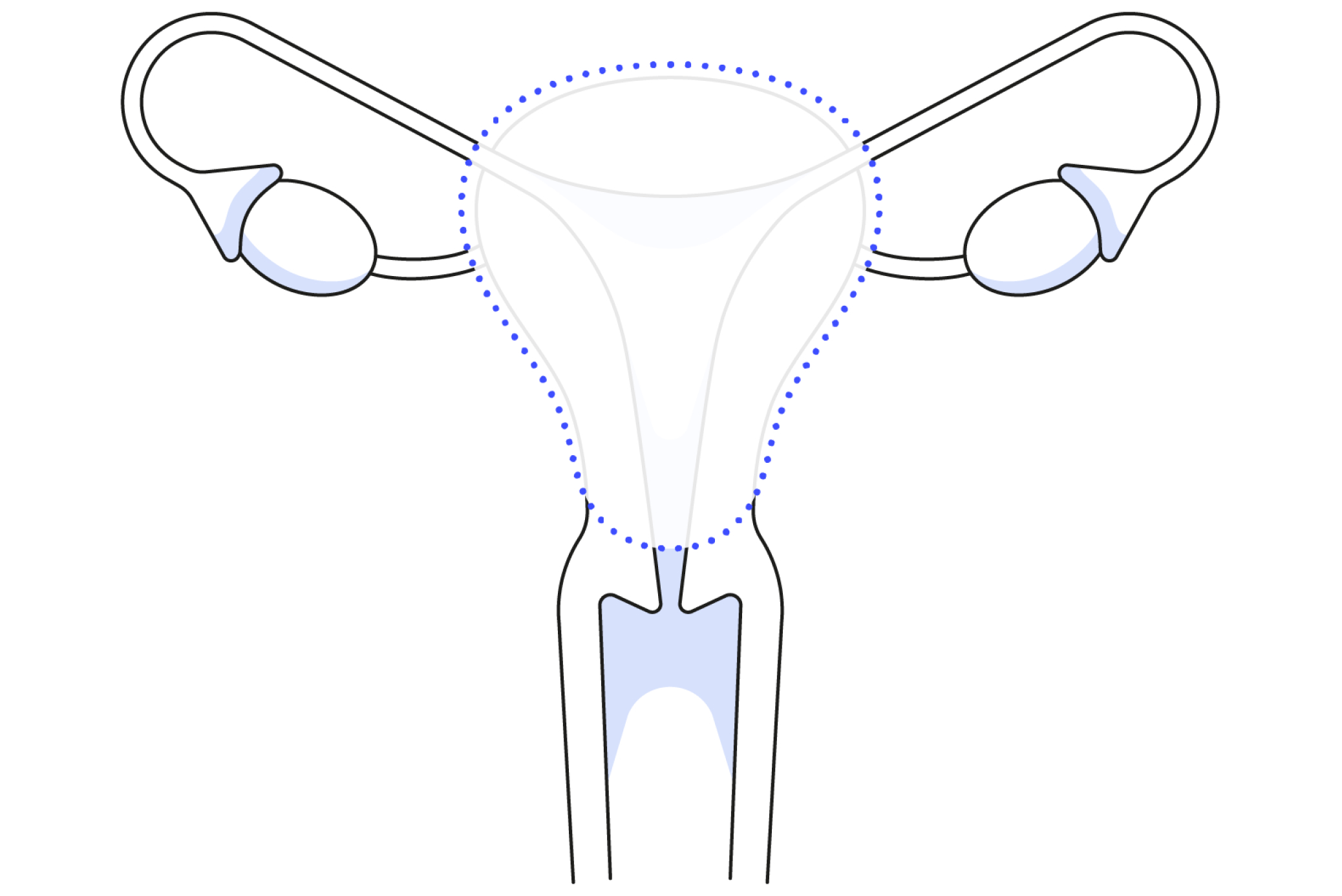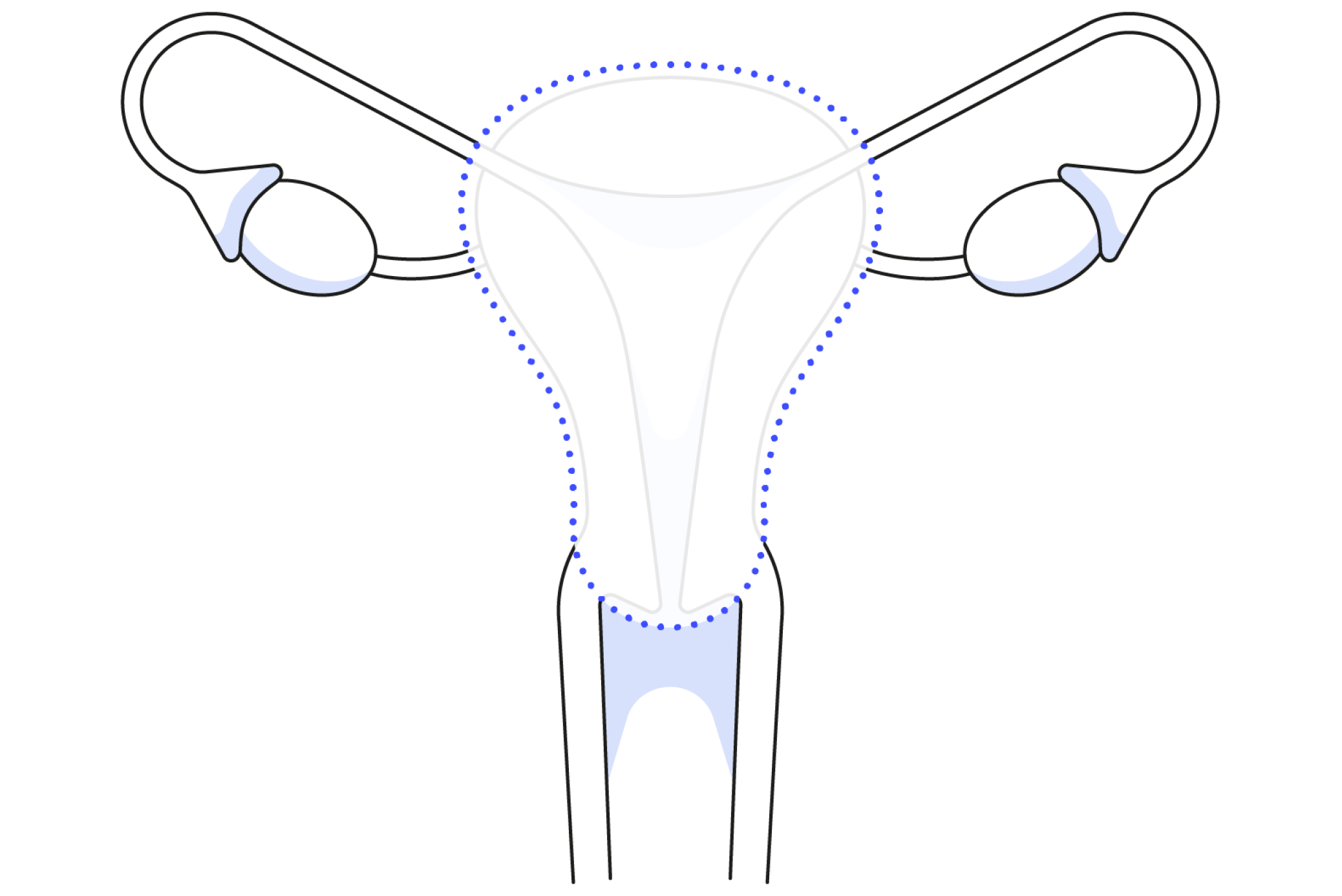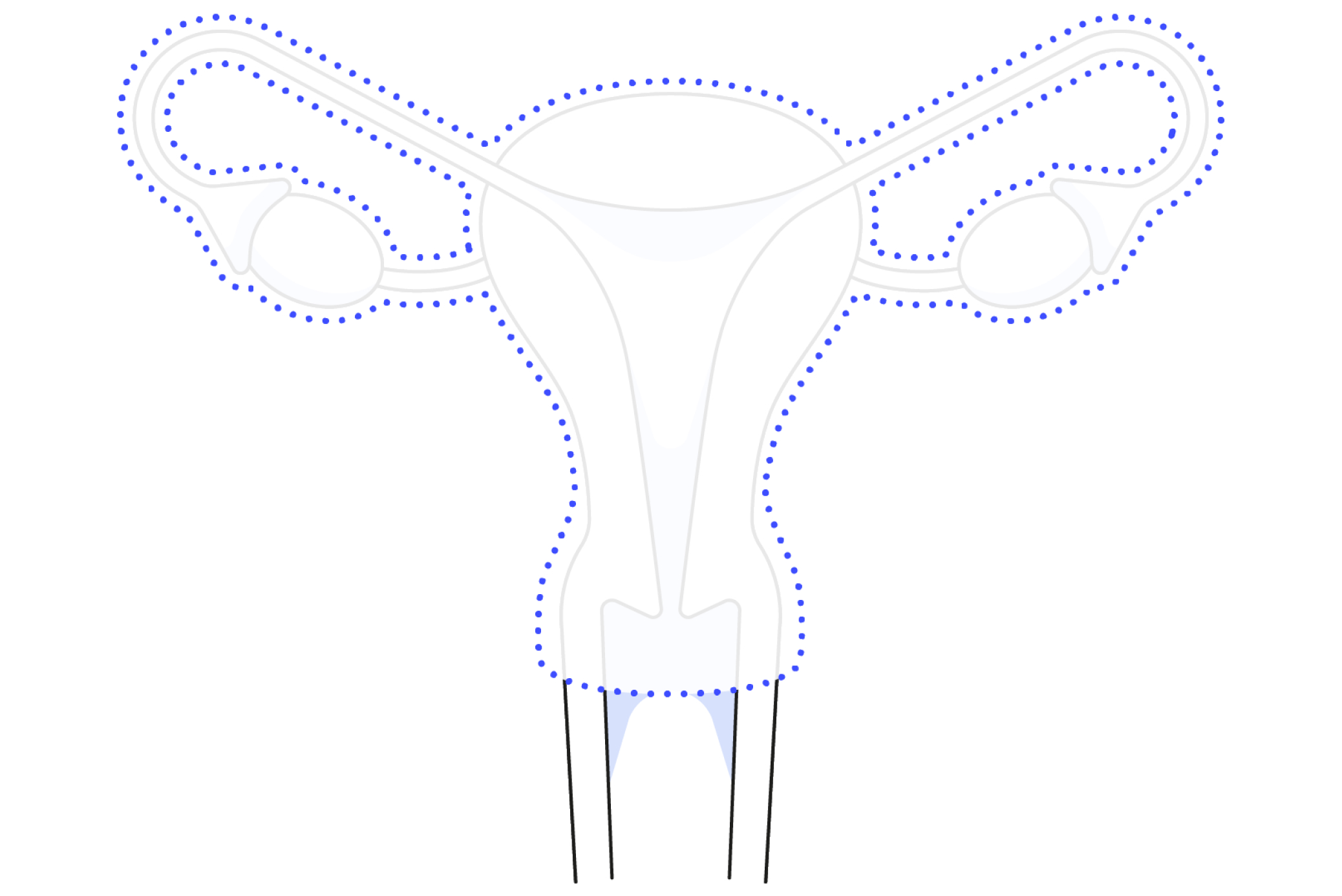A hysterectomy is surgery to remove the uterus, and possibly the ovaries and fallopian tubes. There are several conditions that may prompt your doctor to recommend a hysterectomy. They range from benign (noncancerous) conditions, like endometriosis or fibroids, to cancer conditions, like endometrial or uterine cancer. While the number of women who receive hysterectomies has declined over the last several decades, approximately 400,000 women in the U.S. still receive hysterectomies each year.1
On this page, you’ll find an overview of the types of hysterectomies, information on how hysterectomies are performed, questions you can ask your doctor, and how to find a surgeon who performs hysterectomies with the da Vinci system.
There are several types of hysterectomy: partial hysterectomy, simple or total hysterectomy and radical hysterectomy. Your surgeon will discuss what they recommend. This may vary based on your condition, symptoms, and age. If you have cancer, the doctor will also consider the type of cancer you have, its location, and progression.2



Traditionally, surgeons performed hysterectomy through open surgery, which requires a large incision in your belly. The surgeon looks directly at the surgical area through the large incision and removes the uterus using hand-held tools.
It is becoming increasingly common for surgeons to offer minimally invasive hysterectomy.1 Minimally invasive procedures require either one or a few small incisions on your abdomen.
There are three types of minimally invasive approaches: vaginal hysterectomy, laparoscopic hysterectomy, or robotic-assisted surgery, possibly with da Vinci technology. Vaginal hysterectomy removes the uterus through an incision in your vagina. Doctors perform minimally invasive laparoscopic or robotic-assisted surgeries through a few small incisions or a single small incision near the belly button. To perform a laparoscopic hysterectomy, surgeons use special long-handled tools while viewing magnified images from the laparoscope (camera) on a video screen. Robotic hysterectomy surgery is described below.

It’s important to remember that Intuitive does not provide medical advice. After discussing all options with your doctor, only you and your doctor can determine whether surgery with the da Vinci system is appropriate for your situation. You should always ask your surgeon about his or her training, experience, and patient outcomes.
Every surgeon's experience is different. Be sure to talk with your surgeon about the surgical outcomes they deliver using the da Vinci system. For example, ask about:
There are additional surgical outcomes you may want to talk about with your doctor. Please ask to discuss all important outcomes. Every surgery involves risk and you can read more about those associated with hysterectomy.
Learn more about da Vinci system technology and more about robotic-assisted minimally invasive surgery.
Explore what happens on the day of surgery with the da Vinci system and tips for planning and preparation.
See detail about hysterectomy for benign conditions in our brochure designed for patients and their families.
See detail about hysterectomy for oncology conditions in our brochure designed for patients and their families.
Gynecologists perform robotic surgery using da Vinci systems in many types of procedures.
Financial disclosure
The independent surgeons mentioned on this website have received compensation from Intuitive for consulting and/or educational services.
Surgical risks
Risks associated with hysterectomy, benign (removal of the uterus and possibly nearby organs) include injury to the ureters (the ureters drain urine from the kidney into the bladder), vaginal cuff problems (scar tissue in vaginal incision, infection, bacterial skin infection, pooling/clotting of blood, incision opens or separates), injury to bladder (organ that holds urine), bowel injury, vaginal shortening, problems urinating (cannot empty bladder, urgent or frequent need to urinate, leaking urine, slow or weak stream), vaginal fistula (abnormal hole from the vagina into the urinary tract or rectum), vaginal tear or deep cut. Uterine tissue may contain unsuspected cancer. The cutting or morcellation of uterine tissue during surgery may spread cancer, and decrease the long-term survival of patients.
Risks associated with hysterectomy, cancer (removal of the uterus and possibly nearby organs) include injury to the ureters (the ureters drain urine from the kidney into the bladder), vaginal cuff problem (scar tissue in vaginal incision, infection, bacterial skin infection, pooling/clotting of blood, incision opens or separates), injury to bladder (organ that holds urine), bowel injury, vaginal shortening, problems urinating (cannot empty bladder, urgent or frequent need to urinate, leaking urine, slow or weak stream), vaginal fistula (abnormal hole from the vagina into the urinary tract or rectum), vaginal tear or deep cut.
Important safety information
Patients should talk to their doctor to decide if daVinci surgery is right for them. Patients and doctors should review all available information on non-surgical and surgical options and associated risks in order to make an informed decision.
Serious complications may occur in any surgery, including daVinci surgery, up to and including death. Serious risks include, but are not limited to, injury to tissues and organs and conversion to other surgical techniques which could result in a longer operative time and/or increased complications. For Important Safety Information, including surgical risks, indications, and considerations and contraindications for use, please also refer to www.intuitive.com/safety.
Individuals' outcomes may depend on a number of factors, including but not limited to patient characteristics, disease characteristics and/or surgeon experience.
DaVinci Xi system precaution statement
The demonstration of safety and effectiveness for the specific procedure(s) discussed in this material was based on evaluation of the device as a surgical tool and did not include evaluation of outcomes related to the treatment of cancer (overall survival, disease-free survival, local recurrence) or treatment of the patient’s underlying disease/condition. Device usage in all surgical procedures should be guided by the clinical judgment of an adequately trained surgeon.
Medical advice and locating a doctor
Patients should talk to their doctor to decide if da Vinci surgery is right for them. Other options may be available and appropriate. Only a doctor can determine whether da Vinci surgery is appropriate for a patient’s situation. Patients and doctors should review all available information on both non-surgical and surgical options in order to make an informed decision.
Surgeons experienced with the da Vinci system can be found using the Surgeon Locator. Intuitive Surgical provides surgeons training on the use of the daVinci system but does not certify, credential or qualify the surgeons listed in the Surgeon Locator.
Published evidence
In order to provide benefit and risk information, Intuitive Surgical reviews the highest available level of evidence on urologic procedures. Intuitive Surgical strives to provide a complete, fair and balanced view of the clinical literature. However, our materials should not be seen as a substitute for a comprehensive literature review for inclusion of all potential outcomes. We encourage patients and physicians to review the original publications and all available literature in order to make an informed decision. Clinical studies are typically available at pubmed.gov.